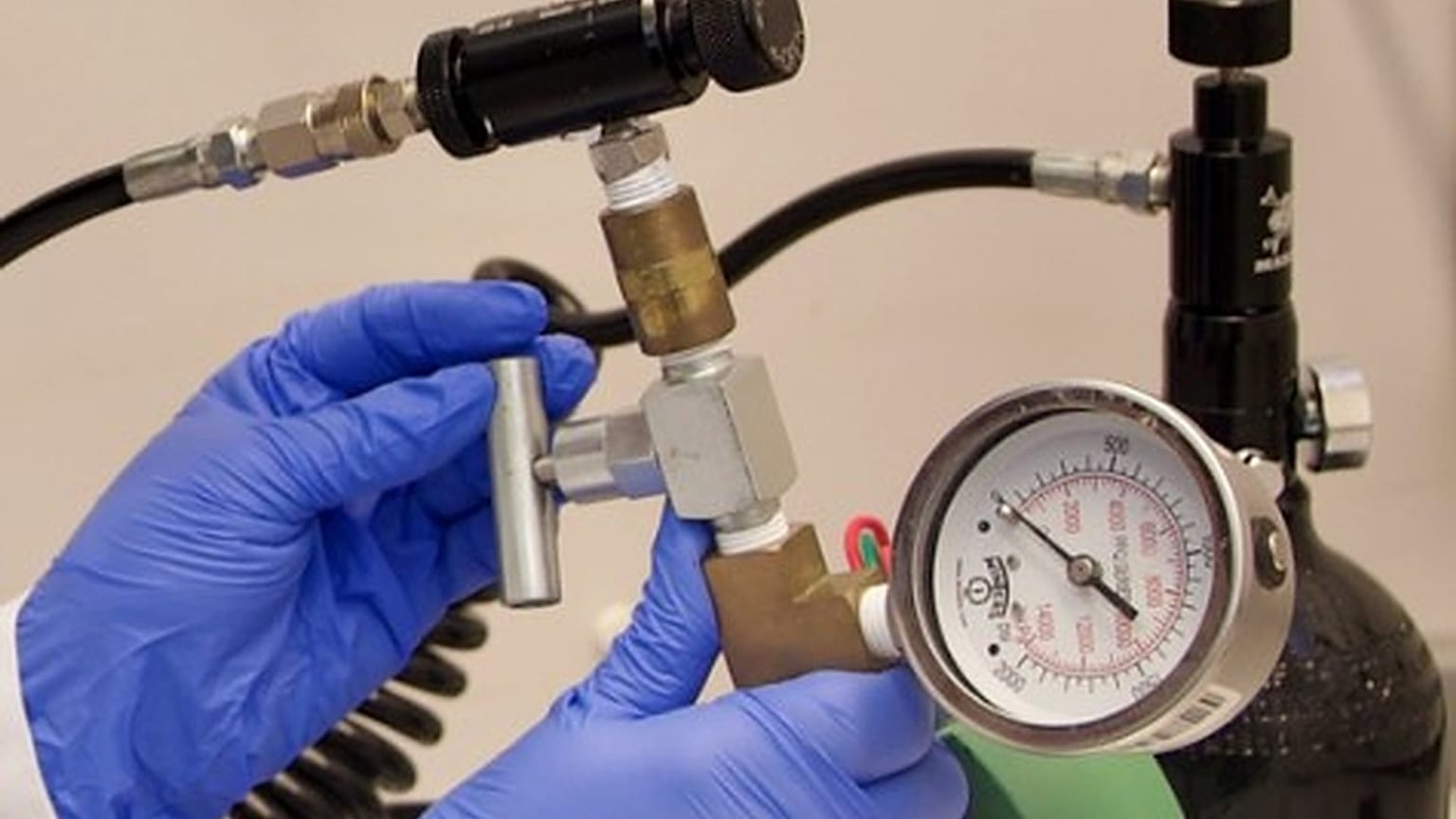Could a puff of air one day replace the needle in delivering medicines and vaccines? These scientists are working on it.
The last few years have highlighted the importance of vaccines to safeguarding public health - but what if there was a better way to deliver the vaccine than with the dreaded needle?
Researchers may have the answer - in the form of a jet that can puff a vaccine through the skin with just a small amount of pressure, a sensation they compare to being hit by a foam toy.
The MOF-Jet, developed by scientists at the University of Texas at Dallas in the US, was presented to an audience at the spring meeting of the American Chemical Society on Monday.
The project’s principal investigator, Jeremiah Gassensmith, started tinkering with the idea during a COVID-19 pandemic lockdown. He ordered inexpensive pieces of a compressed gas-powered jet injection system and later passed them over to Yalini Wijesundara, a graduate student in the lab.
Wijesundara, who presented the work at the meeting, had previously researched other jet injectors dating back to the 1960s that use compressed gas to inject a narrow stream of fluid.
Thinking that if the injectors could be modified to fire solids, she thought they could be a delivery system for materials inside a metal-organic framework (MOF). These are porous, crystalline structures that act like molecular cages to encapsulate a wide variety of materials, including nucleic acids and proteins.
By combining the jet injector with the lab’s existing work on MOFs, Wijesundara created the MOF-Jet, which can deliver powders to cells by shooting them in with air.
Gassensmith’s group previously worked with the MOF called zeolitic-imidazolate framework eight, or ZIF-8.
“Compared to gold, it’s cheap and protects biological materials, such as nucleic acids,” explained Wijesundara. “We can also store vaccine formulations within it as powders at room temperature, which eliminates the need for the extremely cold temperatures many liquid vaccines require”.
‘Point and shoot’
The team encased a variety of biological materials within ZIF-8, which protected them from being broken down too quickly.
They then modified a gene gun - which is typically used in veterinary medicine to fire genetic material or proteins into an animal’s cells - to create the MOF-Jet. A puff of gas fired the powdered formulation into cells, which Wijesundara said was as easy as “pointing and shooting”.
They tested their system and showed that the MOF-Jet delivered a ZIF-8-encased gene to onion cells and a ZIF-8-encased protein to mice. According to Gassensmith, the blast from the injector just feels “like you got hit with a Nerf bullet” - much less painful than being stuck with a needle.
The team also realised they could change the rate at which the cargo was released by altering the gas used. ZIF-8 is sensitive to acidic environments, and when carbon dioxide reacts with water in cells, it makes carbonic acid that, in turn, helps break apart the MOF.
“If you shoot it with carbon dioxide, it will release its cargo faster within cells; if you use regular air, it will take four or five days,” she explained. This means that the same drug could be released over different timescales without changing its formulation. “Once we realised that, it opened up a lot of possibilities,” said Gassensmith.
The team is now using this method to deliver chemotherapeutics and adjuvants as a potential treatment for melanoma, the most serious form of skin cancer.
They say that because the MOF-Jet can disperse material over a wide area, it could distribute a cancer therapeutic into a melanoma more evenly than with a needle, which is the current delivery method.
Research is still ongoing, and the researchers believe the adaptability of their MOF-Jet could allow a wide number of applications, from veterinary medicine to agriculture, or someday even human vaccinations or treatments.


















